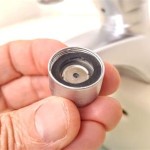24 Inch Bathroom Vanity And Sink: A Comprehensive Guide
The 24-inch bathroom vanity and sink combination represent a strategic solution for maximizing space and functionality in smaller bathrooms, powder rooms, and en-suite configurations. Characterized by their compact footprint, these vanities provide essential storage while incorporating a sink, effectively consolidating key bathroom fixtures into a single unit. This article explores the diverse range of available designs, materials, installation considerations, and factors influencing performance and longevity when choosing a 24-inch bathroom vanity and sink.
The prevalence of smaller bathrooms in modern apartments, condominiums, and older homes has propelled the demand for space-saving fixtures. A 24-inch vanity offers a balance between utility and spatial efficiency, allowing for the inclusion of a necessary storage and washing area without overwhelming the room. They cater to a spectrum of aesthetic preferences and practical needs, making them a versatile option for bathroom renovations and new construction projects.
Design and Style Options
The aesthetic landscape of 24-inch bathroom vanities is remarkably diverse, reflecting a wide array of design styles. From minimalist modern to traditional farmhouse, options exist to complement almost any bathroom decor. This section considers the primary architectural styles available in the market.
Modern vanities frequently showcase clean lines, geometric shapes, and minimal ornamentation. They often incorporate features such as integrated sinks, sleek hardware, and a focus on maximizing storage through drawers and concealed compartments. Color palettes tend to lean towards neutral tones – white, gray, and black – but may also include pops of color to add visual interest. The use of materials such as engineered wood, glass, and stainless steel is common, lending a contemporary feel.
Traditional vanities, conversely, typically feature more ornate detailing, such as raised panel doors, decorative molding, and antique-inspired hardware. Wood is a dominant material, often stained or painted in rich, warm colors. Sink styles often include undermount or vessel sinks, paired with countertops made of granite or marble. The overall aesthetic evokes a sense of timeless elegance and sophistication.
Transitional vanities bridge the gap between modern and traditional styles, blending elements of both. They may feature clean lines combined with subtle decorative details or a neutral color palette with accents of wood. This style allows for flexibility in design, making it adaptable to a wide range of bathroom aesthetics.
Farmhouse vanities evoke a rustic and charming atmosphere, often featuring shiplap panels, distressed finishes, and farmhouse-style sinks. These vanities frequently incorporate open shelving or wire baskets for storage, adding to the country-inspired aesthetic. Natural wood tones and muted colors are common, creating a warm and inviting space.
Beyond the overarching architectural style, other design elements contribute to the overall look of the vanity. These include the shape of the sink (rectangular, oval, round), the type of countertop (solid surface, quartz, granite), and the finish of the hardware (chrome, brushed nickel, oil-rubbed bronze). Careful consideration of these details is crucial for achieving a cohesive and aesthetically pleasing bathroom design.
Materials and Construction
The materials used in the construction of a 24-inch bathroom vanity significantly influence its durability, longevity, and overall aesthetic appeal. The cabinet, countertop, and sink each require distinct material considerations.
Cabinet construction typically involves solid wood, plywood, or engineered wood products (such as MDF or particleboard). Solid wood offers superior strength and resistance to moisture, but it can be more expensive and prone to warping or cracking in humid environments. Plywood provides a good balance of strength and affordability, with increased resistance to warping compared to solid wood. Engineered wood products are often the most affordable option, but their moisture resistance and structural integrity are lower than solid wood or plywood.
Countertop materials vary widely in terms of appearance, durability, and cost. Solid surface materials, such as acrylic or polyester-based composites, are non-porous, stain-resistant, and easy to clean. Quartz countertops are engineered stone products that offer excellent durability, scratch resistance, and a wide range of color options. Granite is a natural stone that provides a unique and luxurious look, but it requires regular sealing to prevent staining. Marble is another natural stone that offers a classic and elegant appearance, but it is more porous and prone to scratching than granite or quartz. Laminate countertops are the most affordable option, but they are less durable and resistant to damage than other materials.
Sink materials include porcelain, ceramic, glass, stainless steel, and stone. Porcelain and ceramic sinks are durable, stain-resistant, and easy to clean. Glass sinks offer a unique and modern look, but they can be more fragile and require careful cleaning. Stainless steel sinks are durable and hygienic, but they can be prone to scratching and water spots. Stone sinks, such as granite or marble, provide a luxurious appearance, but they require regular sealing and maintenance.
The quality of the hardware, such as hinges, drawer slides, and door pulls, also plays a crucial role in the overall performance and longevity of the vanity. High-quality hardware ensures smooth operation and prevents premature wear and tear.
Installation Considerations and Plumbing
Proper installation is paramount to ensuring the functionality and longevity of a 24-inch bathroom vanity. Ignoring key aspects of the installation process can lead to problems such as leaks, structural instability, and premature deterioration.
Before installation, a comprehensive assessment of the existing plumbing is necessary. This includes identifying the location of water supply lines and drain pipes, as well as ensuring that they are in good working order. If necessary, modifications to the plumbing may be required to accommodate the new vanity. This might involve relocating pipes, installing new shut-off valves, or adjusting drain connections. It is advisable to engage a qualified plumber to perform any necessary plumbing modifications.
The installation process begins with preparing the installation site. This involves removing the old vanity and cleaning the area thoroughly. The floor should be level and free of debris. Any necessary repairs to the wall or floor should be completed before proceeding. The new vanity should be carefully positioned in the installation area, ensuring that it is level and plumb. Shims may be necessary to compensate for uneven floors or walls.
Once the vanity is properly positioned, it should be securely fastened to the wall using screws or anchors. The type of fasteners used will depend on the wall construction. For drywall walls, it is recommended to use wall anchors that are designed to provide a secure hold. For stud walls, screws should be driven directly into the studs. It is crucial to ensure that the vanity is securely attached to the wall to prevent it from tipping or shifting.
After the vanity is secured, the plumbing connections can be made. The water supply lines should be connected to the faucet using flexible supply tubes. The drain pipe should be connected to the sink drain using a P-trap. All plumbing connections should be carefully tightened to prevent leaks. It is recommended to test the plumbing system after installation to ensure that there are no leaks. This can be done by turning on the water supply and checking for any signs of leakage around the connections.
Finally, the countertop and sink can be installed. The countertop should be carefully positioned on top of the vanity and secured using adhesive or screws. The sink should be installed according to the manufacturer's instructions. This may involve applying sealant around the rim of the sink to prevent water from seeping underneath. Once the installation is complete, the area around the vanity should be cleaned and any necessary touch-ups should be made.
Choosing the right faucet to compliment the vanity is also important. The faucet style and finish should coordinate with the overall design of the bathroom. Consider the type of faucet (single-hole, widespread, centerset) and the spout height to ensure that it is compatible with the sink.
By carefully considering these installation considerations, homeowners can ensure that their 24-inch bathroom vanity is properly installed and will provide years of reliable service.

Home Decorators Collection Sedgewood 24 5 In W X 18 75 D 34 375 H Single Sink Bath Vanity White With Arctic Solid Surface Top Pplnkwht24d The Depot

Glacier Bay Sinita 24 In W X 19 D 34 H Single Sink Bath Vanity Natural Oak With White Engineered Stone Top 24no The Home Depot

Eclife 24 In W X 20 D 32 H Single Sink Bath Vanity White With Clear Vessel Top Chrome Faucet And Mirror Bv102wh Vs016tt The Home Depot

Dhp Monteray Beach 24 Inch Bathroom Vanity With Sink Gray Com

Home Decorators Collection Bailey 24 In W X 16 D 35 H Single Sink Freestanding Bath Vanity Steel Blue With White Vitreous China Top Bgbvt2416 The Depot

24 Bathroom Vanity With Top Sink And 2 Drawers Blue Modernluxe Target

Eviva Acclaim 24 In Gray Undermount Single Sink Bathroom Vanity With White Quartz Top The Vanities Tops Department At Com

24 Inch Traditional Bathroom Vanity Solid Wood White Finish

Style Selections Morriston 24 In Distressed Java Undermount Single Sink Bathroom Vanity With White Engineered Stone Top The Vanities Tops Department At Com

Dhp Sunnybrooke 24 Inch Bathroom Vanity With Sink Navy Com
Related Posts







